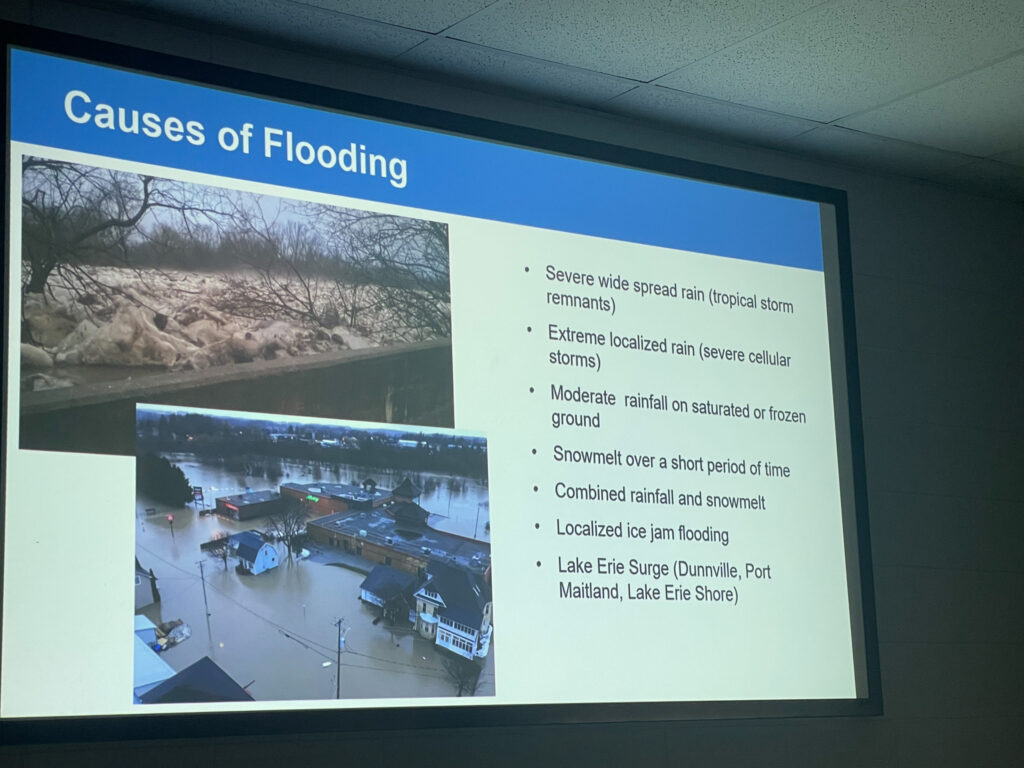“The Grand River Watershed is larger than Prince Edward Island and if the Grand River Watershed was a province in Canada, it would be the seventh largest province. – Katelyn Lynch, Manager of Water Infrastructure with the Grand River Conservation Authority.
Over 20 members attended this month’s Women Inspiring Women – Women’s Institute (WIW-WI) speaker series and meeting on Thursday, May 11, 20223.
This month’s speaker series was all about watershed management with the Grand River Conservation Area (GRCA) and before the presentation began, Elaine Tully, President of Paris’ Women Inspiring Women did a roll call with the question “how do you engage with our two rivers?”
One-by-one, each woman took their turn to share how they personally interact with Paris’ two rivers, the Grand River and the Nith River. From kayaking and canoeing to walking the nearby trails, sitting in the yard with a glass of wine or simply listening to the sounds of the water – there were plenty of ways the women enjoy the nearby rivers and the nature around them.
Katelyn Lynch, Manager of Water Infrastructure with the Grand River Conservation Authority, followed the roll call with a presentation about the history of the GRCA, the Grand River Watershed itself, as well as flood management and flooding in Paris.
“I think we can all appreciate that before the area was settled in 17th century, Indigenous people had a much lighter footprint on the land and the watershed looked very different from what it is today,” she said. “In the early 1800s the Grand River was a source of transportation, power and water for local communities. Settlers focused their development and established their farms, as well as built cities and towns along the river, and the natural environment suffered from all of these impacts. The loss of forests and wetlands caused significant changes to the watershed and how we interact with it and there was a lot of unmanaged construction of dams for industry and mills that reduced the water quality and also interfered with fish movements throughout the water courses.”

Lynch mentioned that in the 20th century flooding became more common and bigger because of the towns historically developing around the river. She also mentioned that droughts due to agriculture in the upper portions of the watershed are another extreme that has to be managed as well.
“Drought was a very significant impact that not only impacted all the water takers and industries along the river, but it also led to poor water quality,” said Lynch. “As you can imagine, there was all this untreated sewage that was flowing into the river, there was industries that were discharging their waste products right into the into the river, and factories were using the river system to dump chemicals and waste. It was also the main receiving water body for municipal sewage, it was also drinking water supply for Brantford and other communities, and it still is a source of drinking water supply in Brantford and some other communities and First Nations in the watershed.”
She noted that this was not only a human health issue but an economic issue and that business leaders came together in 1932 to push the provincial government to pass a law that would help with flood, drought and water quality by allowing them to create a water management agency on a larger scale.
Lynch spoke about the creation of the Grand River Conservation Commission and how the agency was later formed, as well as how the two later came together to create the GRCA and to tackle the latter issues.
With such large communities surrounding the watershed it was imperative for the longevity of the Grand River to be addressed in a serious way.
“The Grand River lies at the heart of one of the richest and fastest growing regions in Ontario,” she said. “As we’ve learned through our history, the vitality of the watershed and its communities is really linked to the river and the natural environment, how we interact with it and how we impact it.”
Lynch talked about the GRCA’s role and how they help to warn communities about incoming floods, flood management with major dams and dikes.
Women in attendance took the opportunity to ask several questions about how the current provincial government could affect the GRCA, how water treatment facilities work, why there is algae and how far farm animals need to be away from water sources, as well as what are dikes and how they work.
Lynch wrapped up the presentation by speaking about the several ways the GRCA works to manage floods, the mechanics of dams, as well as potential flood areas in Paris and how the GRCA collects that information through lidar scanning.
Kimberly De Jong’s reporting is funded by the Canadian government through its Local Journalism Initiative.The funding allows her to report rural and agricultural stories from Blandford-Blenheim and Brant County. Reach her at kimberly.dejong@brantbeacon.ca.
